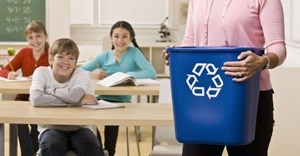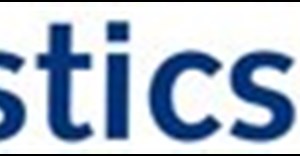
Subscribe & Follow
New on-pack recycling label from Woolworths

To date, recycling labels across the sector have been designed to assist waste collectors and waste separators and not customers and feedback from customers revealed that the industry symbols currently used on packaging are confusing.
Further feedback showed that most customers assume that all packaging is recyclable as long as it has a material symbol on the label, which is not the case. The South African recycling sector does not yet have the appropriate technology and infrastructure to recycle certain materials and current labels do not share information on what is and is not being recycled.
In other instances, customers were not aware that despite their efforts to recycle, they were contaminating recyclable material streams through incorrect disposal. For example, they were not aware that certain packaging components should be separated from the pack in order for other components to be recycled successfully.
High landfill figures
The lack of consumer-friendly recycling labels, insufficient information for customers and high levels of contamination results in lower rates of recycling, with too much recyclable material still making its way to landfill sites.
According to the Department of Environmental Affairs' National Waste Information Baseline Report released in 2012, about 108 million tons of waste is generated in South Africa. Of that, only about 10% was recycled and the remaining 90% disposed at landfill.
WastePlan, a South African recycling company, reports that of the 150 000 households that participate in their recycling programme, more than 10% of recyclable material become non-recyclable due to contamination. According to MD, Bertie Lourens, "We've seen many kerb-side recycling initiatives in the sector fail due to increasing transport and labour costs that combine to make the service uneconomical. As customers become more informed about recycling, more people will participate and the quality of material collected will improve. Initiatives such as consumer-friendly recycling labels will help to boost the local industry."
Woolworths believes that South Africa's recycling and resource recovery rates can be significantly improved by reducing customer confusion and replacing the current symbols with standardised icons on its products.
The new OPRL provides customers with simple icons and messaging showing each component of the packaging; the type of material it is made from (including what sustainable materials have been used in the packaging); and the likelihood of each element of the packaging being widely recycled in South Africa, or not.
"Using the same icons on packaging designs across the retail and waste management sector will improve the rate of recycling by making it easier for customers to participate. Our aim is for the design of the OPRL is to become the adopted standard for all packaging in South Africa," says Kiril Dimitrov, Woolworths Foods packaging manager.
"Currently too much recyclable packaging still makes its way to landfill. By giving customers the information they need to take action, we can ensure that more of the materials that can be recycled, are in fact recycled. This label gives consumers the information they need to make the right choices when they sort and dispose of recyclable products. Most of our customers want to recycle; these labels make it easier for them to make informed decisions."
Aim for 20% labelling by 2014
The company's OPRL was launched in November 2013 and can already be seen in-store on a select number of product lines. It aims to have at least 20% of its products displaying the new label by March 2014. Introduction of the new OPRL will be phased in, as designs change or new product lines are introduced.
"Our approach to packaging is about achieving the right balance between ensuring that products remain protected and, in the case of food, that the product remains safe and hygienic. Our packaging also extends the shelf life for as long as possible so that additional food waste is not created. This means that we are committed to using packaging responsibly," Dimitrov concludes.
Charles Muller of the Packaging Council of South Africa (PACSA) adds, "This new label design shows leading retailers are prepared to go above and beyond what is expected of them to support customers' environmental efforts. We're encouraged to see Woolworths taking the first step and calling on the rest of the industry to follow suit."
A number of industry associations, including PACSA, PRASA, Plastics SA, SAPRO, Collect-a-Can, The Glass Recycling Company, PETCO, POLYCO, Wasteman and WastePlan, currently support the design of the OPRL.








